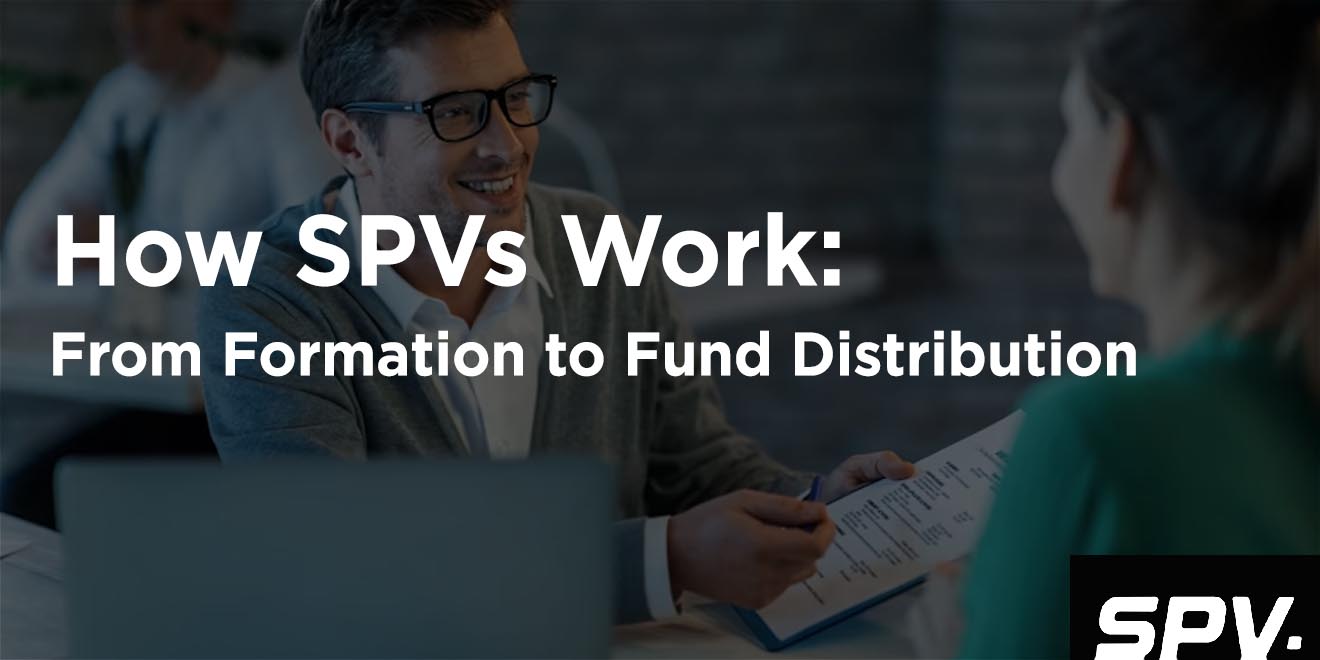-
October 10, 2025

Stepping into the world of alternative investing can feel overwhelming—especially once acronyms like SPV, LP, or GP start flying around a pitch deck. Yet, Special Purpose Vehicles are far less mysterious than they appear. At their core, SPVs are simply single-purpose legal entities created to pool capital, hold a specific asset (or group of assets), and then distribute returns once that asset is sold or otherwise monetized.
Below, you’ll find a plain-English walk-through of the entire SPV life cycle—from that first moment a founder and lead investor shake hands to the day capital lands back in participants’ bank accounts.
An SPV exists for one deal and one deal only. By separating a single investment from an investor’s main fund or personal balance sheet, the vehicle offers:
The most common format in the United States is a Delaware limited liability company (LLC) taxed as a partnership. In global transactions, you might see Cayman or Luxembourg entities if the investor pool is international. Regardless of jurisdiction, the blueprint is similar:
Every SPV begins with a thesis. A lead investor identifies a startup, real-estate parcel, or renewable-energy project that justifies a standalone entity. Legal counsel drafts an operating agreement, outlines investor rights, and files the formation documents. While turnaround can be rapid—best-in-class platforms launch within 48 hours—it still pays to nail down:
Once documents are finalized, the managing member circulates a private placement memorandum (PPM) and subscription packet. Potential participants review:
Investors wire funds to an escrow or directly to the SPV’s bank account. Only after the minimum threshold is met—say, $1 million—does the vehicle close and wire money to the underlying asset.
In this middle stretch, not much headline drama unfolds, but steady administration work hums beneath the surface:
If the SPV holds a real-estate project, you’ll also see rent rolls, construction draws, and insurance updates. For a tech startup, reports may include user-growth charts or follow-on financing rounds. Either way, the SPV itself never morphs into an operating business—it’s a passive holding shell.
Cash comes back in one of three classic ways:
When liquidity lands, the administrator tallies gross proceeds, subtracts expenses, then distributes in strict waterfall order:
Finally, the entity files a final tax return, issues closing statements, and dissolves—its mission complete.
Special Purpose Vehicles offer a streamlined, cost-effective gateway into private assets—a single-deal fund you can spin up in days rather than months. By ring-fencing liability, simplifying cap tables, and providing clear exit waterfalls, SPVs let managers focus on sourcing great opportunities instead of wrestling with back-office complexity.
Whether you’re an emerging VC backing your favorite seed-stage startup or a real-estate syndication refinancing a multifamily property, knowing each stage—formation, fundraising, management, and distribution—will help you sidestep surprises and deliver smoother outcomes to every participant in the capital stack.

Get Latest News and Updates From VID.co! Enter Your Email Address Below.
Our team is here to guide you through every step, whether you’re launching a real estate SPV or need a tailored white label solution. Contact us today for a personalized consultation and find out how SPV.co can streamline your investment management.